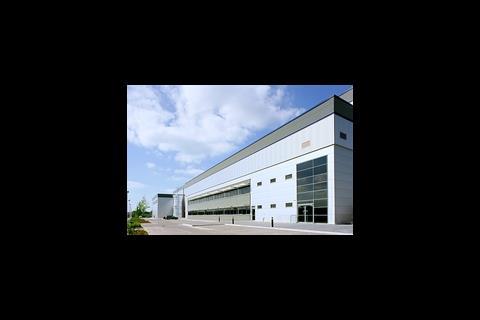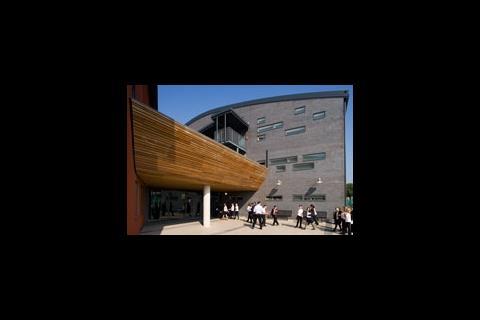Read how Roger Bullivant clinced the Innovation prize at the Sustainability Awards and take a closer look at the runners up
BDP triumped were the winners of this year's Innovation Technology category of the Sustainability Awards. We take a look at what made their ICT solution stand out from a strong field, and found out more about the sustainable benefits of the runners up.
Eco-friendly foundations: Roger Bullivant
Hidden out of view, foundations might be considered a necessity rather than a target for reducing a building's environmental impact, but Roger Bullivant's System First is a modular house foundation system claimed to offer significant environmental benefits.
The foundation system is a viable alternative to traditional strip and deep trench foundations. It comprises prefabricated galvanised steel beams spanning between concrete pile caps. Pre-cut high-density polystyrene slabs in metal supports then sit on the beams, onto which is cast a concrete screed to create a lightweight and highly insulated floor slab.
Roger Bullivant claims dramatic savings in carbon emissions, water consumption and raw materials. Compared with a traditional trench-fill foundation for a house with an 80m2 footprint, it says that CO2 emissions are reduced from a typical 73 tonnes to just 13 tonnes. Water use is reduced by almost 90% from a staggering 36,000 litres to just under 4,300 litres. The company also cites a 75% reduction in construction time on a traditional house foundation, with comparable cost savings.
Integrated ICT: BDP, Leigh Academy
Today's secondary schools are crammed with ICT. But integrating this to make the most of the way facilities are run and exploit the learning opportunities requires smart thinking.
BDP's solution for the Leigh Academy in Kent is all encompassing. Temperature monitoring in the school records that night-time cooling has been effective in suitably cooling down the school, storing coolth in the earth tubes and the building's thermal mass. It also ensures that the skylight vents in the winter gardens open to provide natural ventilation.
Beyond this, the ICT system also integrates features such as e-registration, cashless catering - which also records pupil's diets for a sports science project - cutting-edge recording studios broadcasting to pupils and parents over the internet, sports facilities that superimpose a virtual David Beckham over a pupil's kicking swing and a remote security system that allows deliveries to the school to be done safely.
None of this is new technology, but it has been integrated in a school environment and on a typically tight budget.
Runners-up
Carbon-neutral cladding: Corus, Confidex Sustain
With Confidex Sustain, Corus claims it has created the world's first carbon-neutral building envelope. Based around the firm's Colorcoat cladding system, its environmental impact from manufacture through to installation, use and end of life is measured and offset. This includes all parts, from the internal and external steel cladding to the fixings and insulation.

But it is not just about offsetting the emissions created during the cladding lifecycle - the product has been developed to minimise environmental impact in the first place. For example, it has been tested to BS 6920 to make sure it can be used in conjunction with water intended for human consumption.
It has also been designed to maximise air-tightness (down to 1.03m3/h/m2 at 5Pa) in order to provide better thermal performance. In addition, all traces of heavy metals and fire retardants from the top coat have been removed and the firm has invested in a new railhead at its manufacturing facility to cut down on road journeys for materials delivery.
In its first 12 months, Confidex Sustain has been used on more than 30 projects, with over 9,000 tonnes of carbon dioxide offset.
Pollutant-absorbing roof tiles: Marley Eternit Ecologic roof tile
In recent years, there has been plenty of innovation in roof tiles, including some that will generate power and even hot water. Marley Eternit's Ecologic is a tile with more unusual ecological credentials - it absorbs asthma-causing pollutants from the air.
It uses a patented coating that contains a catalyst activated by the sun's rays, which removes nitrogen oxides that contribute to asthmatic and bronchial problems and atmospheric pollutants responsible for smog and acid rain. The coating's secret is its special grades of titanium oxide, which trigger a reaction when exposed to ultraviolet radiation, which in turn converts nitrogen oxides into nitric acid ions that are then neutralised by the lime and calcium carbonate in the concrete.
Ecologic is available on the company's Ludlow Major profile of interlocking tiles, which the company says also combines much higher levels of recycled materials than standard concrete roof tiles. Based on test results, the tiles are expected to go on absorbing pollutants for up to 20 years.
Marley Eternit estimates that an average-sized roof constructed using the tiles will during its lifetime remove the same amount of nitrogen oxides as that emitted by a car over 100,000 miles.
Recycled plastic walls: Swift Horsman
Three million tonnes of plastic waste is produced in the UK every year, only a small proportion of which can be reused or recycled. However, some of this will now be making its way into Mediwall, a new panelised solution for washrooms and en-suite bathrooms from Swift Horsman.
More than 80% of the panel is made from recycled plastic - with the aim to reach 100% recycled content in the future - and the panel itself is in turn also recyclable.
Typical applications for the wall panels are places such as schools and hospitals and they are pre-plumbed and pre-wired offsite where necessary to enable them to be installed with semi-skilled labour.
The panels blend strength, durability, sound attenuation and fire resistance, without any secondary finishing or processing. They are also stiff enough not to require a secondary steel or timber support frame. The company claims an embodied energy of 28MJ/kg for the panelling.
Cutting standby power: Fitzpatrick intelligent power system
We have all been given the message that leaving electrical equipment on standby wastes enormous amounts of energy. Contractor Fitzpatrick has taken this on board and is developing what it calls an intelligent power system.
The concept uses a system of dual circuit power tracks under the floor, connected to digitally controlled timers. These are programmed to shut down non-essential equipment such as computers and printers during the hours of 7pm and 7am and all day at weekends, while power is maintained to essential equipment.
Recognising the need for occasional override, switches are added that allow the system to be manually extended in half hourly increments.
Fitzpatrick estimates that installation of the system will save more than 15 tonnes of CO2 a year and will pay back in around five-and-a-half years.





























No comments yet